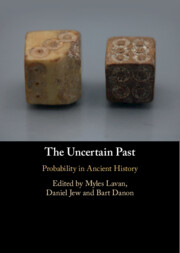1 - Probabilistic Modelling in Ancient History
Published online by Cambridge University Press: 18 November 2022
Summary
This chapter introduces the concepts and methods used by the other chapters in the volume, using the long-standing problem of estimating the land carrying capacity of classical Attica to illustrate the benefits of probabilistic modelling. We begin by surveying the development of techniques for managing uncertainty in ancient history (1.1) and past work on the specific problem of Attica’s land carrying capacity (1.2). The chapter then turns to theoretical questions about the nature of uncertainty and probability (1.3), introducing the ‘subjectivist’ conception of probability as degree of belief, a theoretical framework that makes probability a powerful tool for historians. We go on to discuss the procedure of using probability distributions to represent uncertainty about the actual value of a quantity such as average barley yield in ancient Attica (among other variables relevant to the problem of land carrying capacity) (1.4), the need to be aware of cognitive biases that distort our probability judgements (1.5), the use of Monte Carlo simulation to combine uncertainties (1.6), the potential problem of epistemic interdependence (1.7), the interpretation of the outputs of a Monte Carlo simulation (1.8), and the use of sensitivity analysis to identify the most important sources of uncertainty in a simulation. The appendix illustrates model code in R.
Keywords
Information
- Type
- Chapter
- Information
- The Uncertain PastProbability in Ancient History, pp. 1 - 50Publisher: Cambridge University PressPrint publication year: 2022
References
Accessibility standard: Unknown
Why this information is here
This section outlines the accessibility features of this content - including support for screen readers, full keyboard navigation and high-contrast display options. This may not be relevant for you.Accessibility Information
- 1
- Cited by
